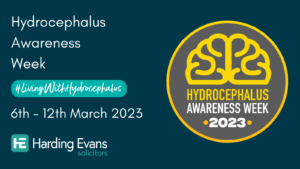-
Business Services ▾
-
Company & Commercial
- Legal Services for Landlords
- Commercial Property
-
Employment Law
- - Sponsor Licences
- - Employment law solicitors and HR training UK
- - Employment Tribunals Advice
- - HR Consultancy
- - Discrimination and Family Issues in the Workplace
- - Restrictive Covenants
- - Drafting and Varying Contracts of Employment
- - Redundancies and Restructuring
- - Disciplinary Hearings, Dismissals and Grievances
- - Trade Unions and Industrial Action
- - TUPE Guidance
- Commercial Litigation
-
Legal Compliance
- Debt Recovery
- Business Recovery & Insolvency
-
Company & Commercial
-
Individual Services ▾
- Residential Property
- Public Law
- Family & Matrimonial
- Children Law
-
Clinical Negligence
- - Abuse and neglect of the elderly
- - Fracture Negligence
- - Surgical Negligence
- - GP Negligence
- - Gynaecological Claims
- - Medication and Prescription Error Advice
- - Paediatric Claims
- - Orthopaedic Negligence
- - Physiotherapy or chiropractic treatment errors
- - Ophthalmic Eye Claims
- - Cancer Misdiagnosis Claim
- - Pressure Sores
- - Inquest Representation
- - Cauda Equina Syndrome Compensation
- - Anaesthetic Awareness – Administration Mistakes
- - Birth Injuries
- - Cosmetic Surgery Mistakes
- - Negligent Cardiac Care Claims
- - Cerebral Palsy
- - Chiropractic Injury
- - Colorectal Surgery
- - Consent to Treatment
- - Dental Negligence
- - Ear, Nose and Throat
- - Sepsis
- - Personal Injury
- Wills & Probate
- Dispute Resolution
-
Sports Law
- Employment Law
-
UK COVID-19 Inquiry
- LGBTQ+ Legal Advice
9th March 2023 | Clinical Negligence
Shining a light on Hydrocephalus Awareness Week
As this week is Hydrocephalus Awareness Week, our Clinical Negligence team will be shining a light on living with this complex condition and useful resources.

Hydrocephalus describes conditions in which there is a build-up of excess cerebrospinal fluid (CSF) in the chambers of the brain, which compresses the surrounding tissues and raises the pressure inside the skull.
What causes Hydrocephalus?
It is caused by an inability of CSF to drain away into the bloodstream. This can happen due to differences in the way the brain develops, failure of fluid absorption in an otherwise typical brain, or damage to brain tissue by head injury, haemorrhage, or infection.
The condition can be associated with learning difficulties that impact concentration, reasoning, short-term memory, co-ordination, motivation, organisational skills, and language. Physical effects may include visual problems, or early puberty in children.
How is Hydrocephalus treated?
Many of these effects can be reduced through various types of treatment. The most common form of treatment is by diverting the cerebrospinal fluid (CSF) to a place in the body where it can be absorbed.
Some forms of hydrocephalus require no specific treatment or are temporary, requiring no treatment on a long-term basis.
You can find out more about #LivingWithHydrocephalus by heading to the Shine Charity website.
If you or anyone you know has been affected by clinical negligence relating to a hydrocephalus diagnosis and would like advice from our expert legal team, please contact us.












